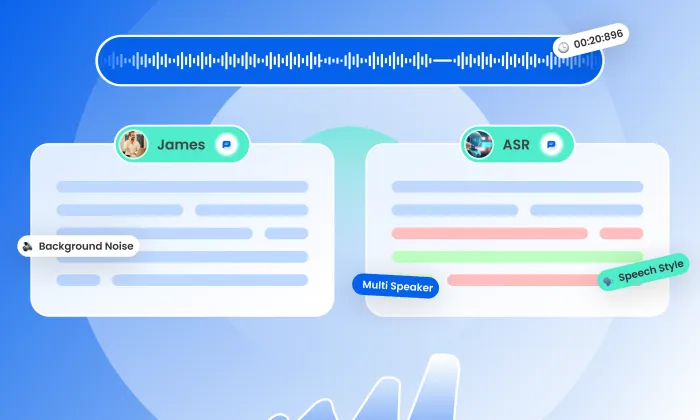How are in-car voice datasets used in autonomous vehicle systems?
Autonomous Vehicles
Voice Recognition
In-Car Systems
In-car voice datasets play a pivotal role in developing advanced autonomous vehicle systems. These datasets provide the essential training data required for AI models that power voice recognition, command understanding, and passenger interaction. By capturing the complexities of the vehicle environment, these datasets ensure AI systems perform effectively in real-world driving conditions.
Why In-Car Voice Datasets Are Essential
Navigating Complex Acoustic Environments
Vehicles present unique acoustic challenges due to noise from engines, road surfaces, wind, and passenger conversations. This makes specialized datasets crucial for training Automatic Speech Recognition (ASR) systems. Unlike typical speech datasets recorded in quiet settings, in-car datasets capture speech under diverse conditions, enabling AI models to adapt to the dynamic and noisy environments of vehicles.
- Background Noise: These datasets include recordings with varying levels of background noise, such as music, air conditioning, and passenger conversations, allowing models to learn to filter out irrelevant sounds.
- Speech Variability: They capture spontaneous speech, command phrases, and emotional utterances from both drivers and passengers, which are essential for creating responsive AI systems.
How In-Car Voice Datasets Work
Integration with AI Models
In-car datasets are integral to ASR, Natural Language Understanding (NLU), and Emotion Recognition models. These datasets enable AI systems to perform tasks like voice-activated navigation, real-time voice processing, and emotional response detection.
- Technological Integration: Modern ASR platforms, such as Google Voice and Amazon Alexa, utilize in-car datasets to enhance recognition capabilities in noisy environments.
Data Collection and Annotation
The collection of in-car voice datasets involves meticulous planning using platforms like Yugo, which enables crowd-sourced recordings. This approach ensures diversity in accents, dialects, and speech patterns.
- Recording Conditions: Data is gathered from vehicles in motion and stationary, across urban, highway, and rural environments.
- Microphone Placement: Various microphone placements such as dashboard-mounted or headrest-embedded are considered to influence the quality and clarity of recorded speech.
Each audio sample is annotated with metadata, including:
- Speaker Attributes: Information about the speaker's age, gender, and role (driver or passenger).
- Environmental Factors: Details about vehicle conditions, like windows being open or closed, and engine type.
- Speech Characteristics: Annotations for intent detection, emotion, and background noise type enhance the dataset's applicability.
Real-World Impacts and Use Cases
In-car voice datasets enable numerous applications, enhancing user experience and operational efficiency in autonomous vehicles:
- Voice-Enabled Infotainment Systems: Automotive brands use these datasets to develop sophisticated voice assistants that manage navigation, music, and communication hands-free.
- Emotion Recognition: AI models are trained to recognize emotional cues in speech, allowing for personalized passenger interactions, which is vital for creating a comfortable environment.
- Driver Assistance Systems: These datasets support systems that monitor driver alertness and engagement through voice commands, significantly improving safety.
Navigating Challenges and Best Practices
While invaluable, in-car voice datasets come with challenges:
- Bias from Limited Datasets: Datasets lacking diverse acoustic profiles can lead to biased models. It is crucial to prioritize diversity to avoid poor real-world performance.
- Quality vs. Quantity: Collecting vast amounts of data without sufficient quality checks can degrade model performance. Ensuring high annotation accuracy and environmental diversity is paramount.
To address these challenges, AI teams should:
- Comprehensive Data Collection: Use varied driving conditions and environments to gather richer datasets.
- Regular Evaluation: Benchmark against performance metrics like Word Error Rate (WER) and intent detection accuracy to ensure ongoing model efficacy.
Future Trends in In-Car Voice Datasets
As AI evolves, so do in-car voice datasets. Emerging trends include:
- Multi-Agent Systems: Development of AI that understands and responds to multiple passengers simultaneously.
- Emotion-Rich Data: Collecting nuanced emotional dialogues to enhance interactivity.
- Federated Learning: Utilizing live data feedback for personalized experiences without compromising privacy.
Recommended Next Steps
In-car voice datasets are more than a technical requirement. They are a strategic asset that can significantly enhance autonomous vehicle systems. By focusing on quality, diversity, and robust annotation practices, AI teams can ensure their models are primed for real-world challenges.
Investing in high-performing datasets today leads to more reliable, user-friendly autonomous systems tomorrow. To explore how FutureBeeAI can support your AI initiatives with tailored in-car voice datasets, review our offerings that bridge the gap between cutting-edge technology and real-world application.
What Else Do People Ask?
Related AI Articles
Browse Matching Datasets
Acquiring high-quality AI datasets has never been easier!!!
Get in touch with our AI data expert now!








